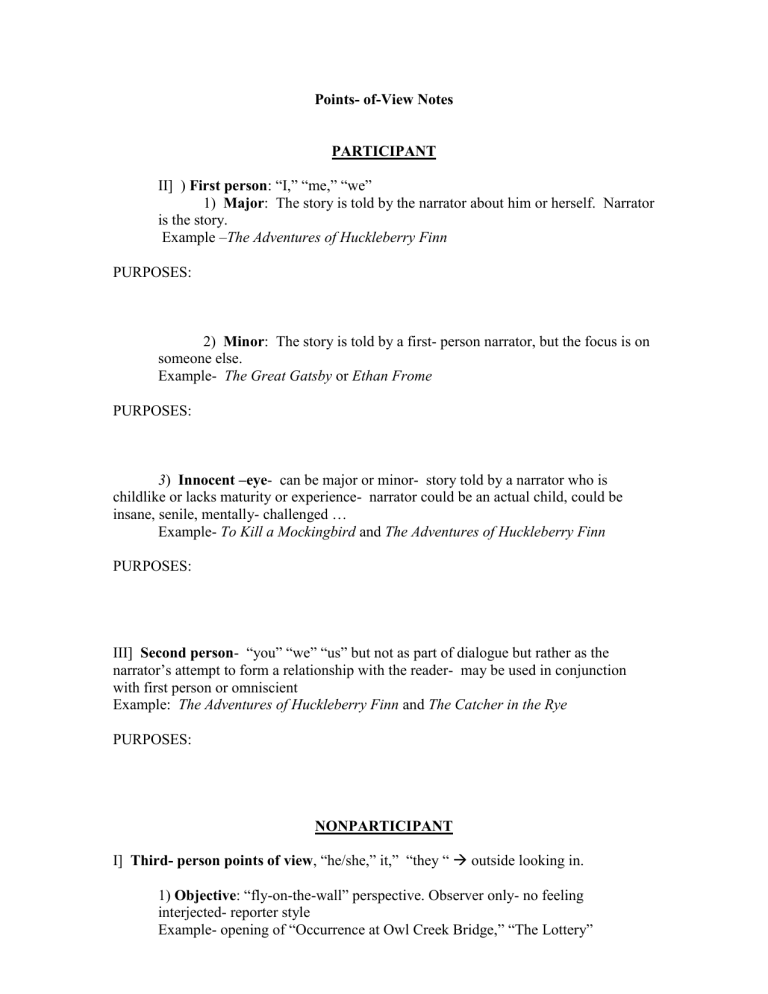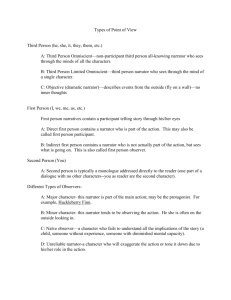point of view notes - Lemon Bay High School

Points- of-View Notes
PARTICIPANT
II] ) First person : “I,” “me,” “we”
1) Major : The story is told by the narrator about him or herself. Narrator is the story.
Example – The Adventures of Huckleberry Finn
PURPOSES:
2) Minor : The story is told by a first- person narrator, but the focus is on someone else.
Example- The Great Gatsby or Ethan Frome
PURPOSES:
3 ) Innocent –eye - can be major or minor- story told by a narrator who is childlike or lacks maturity or experience- narrator could be an actual child, could be insane, senile, mentally- challenged …
Example- To Kill a Mockingbird and The Adventures of Huckleberry Finn
PURPOSES:
III] Second person - “you” “we” “us” but not as part of dialogue but rather as the narrator’s attempt to form a relationship with the reader- may be used in conjunction with first person or omniscient
Example: The Adventures of Huckleberry Finn and The Catcher in the Rye
PURPOSES:
NONPARTICIPANT
I] Third- person points of view
, “he/she,” it,” “they “
outside looking in.
1) Objective : “fly-on-the-wall” perspective. Observer only- no feeling interjected- reporter style
Example- opening of “Occurrence at Owl Creek Bridge,” “The Lottery”
PURPOSES:
2) Third- person limited : narrator focuses on a single character and can get into the thoughts and feeling of that one character.
Example- The Awakening
PURPOSES:
3) Omniscient : narrator can transcend time and place. Can get into any and all of the characters’ thoughts and feelings, god-like abilities to know…
Example- The Scarlet Letter
PURPOSES:







